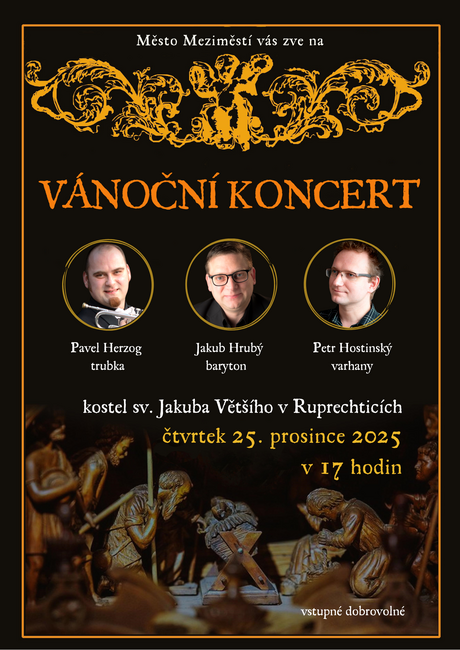The Church of Saint James the Greater rises on a hill in the northern part of the village of Ruprechtice, situated directly in the middle of the local cemetery. It was built on the site of an earlier wooden chapel, which is first mentioned in written records in 1386. The construction of the new stone church began with the laying of the foundation stone on August 18, 1720. The project was most likely designed by Christoph Dientzenhofer, while the actual construction work was led by his son, the renowned Baroque architect Kilian Ignaz Dientzenhofer. The church was consecrated in April 1723.
History
The church was commissioned by Abbot Otmar Daniel Zinke as a replacement for the original wooden chapel that had served the parish for several centuries. Although the abbot had the final say over buildings on monastic land, the construction costs had to be at least partially covered by the local priests from parish income and donations. For this reason, the design of the church is simpler and more modest, reflecting the typical style of rural sacral buildings of that time.
The parish of Ruprechtice once also included the villages of Hynčice and Jetřichov. In addition to the church nave, the complex includes a rectory adorned with the coat of arms of the Břevnov-Broumov Abbey above the entrance. The area also features a Renaissance two-storey bell tower from the second half of the 16th century, which serves as the gateway to the cemetery.
Architecture
The church is a single-nave structure with an elongated octagonal ground plan, which is relatively rare for rural churches in the Broumov region. The nave is divided by broad window niches that give the building an airy and luminous quality. The church is constructed from roughly hewn sandstone blocks laid in layers and interspersed with quarry stones. The entrance portal, cornices, and window frames are made of grey sandstone. The plaster is lime-based stucco, with pilaster frames that define the surfaces of the façade and emphasize its simple but elegant articulation.
The facade is divided by pilasters and is decorated with a prominent gable featuring pilasters, volute wings, and a segmental pediment. Above the church entrance is a hexagonal marble plaque inscribed in Latin, referring to Saint James the Greater as the "Son of Thunder" and acknowledging the contributions of Abbot Otmar Daniel Zinke to the church's construction.
Interior
Inside the church, visitors are struck by the remarkable Baroque furnishings, including a pulpit with figurative reliefs, which are among the most notable features of the interior. The main altar, in Neo-Baroque style, was complemented in 1998 by a painting of Saint James the Greater by Ukrainian painter and graphic artist Vyacheslav Ilyashenko. This added a modern artistic touch to the church while still honoring its ancient tradition.
The nave ends in an octagonal layout with richly articulated façades and interior spaces. At the eastern end of the church is a small sanctus tower, typical of Baroque religious buildings, topped with a lantern and an onion-shaped dome.
Bell Tower
The Renaissance bell tower stands southeast of the church and is one of the oldest parts of the complex. It has two stories, with the ground floor vaulted by a cross vault, forming a passageway to the cemetery. This structure is not only practical but also adds an aesthetic element that enhances the historical atmosphere of the site. As with many other churches in the region, most of the original bells were requisitioned during the First World War, reflecting the challenges and hardships the church and its surroundings faced during the 20th century.
Present Day
The Church of Saint James the Greater is still actively used by the Roman Catholic community. Services are held regularly on the first and fourth Sundays of each month. Thanks to its location on a hill in the middle of the cemetery, the church has a striking and solemn atmosphere that attracts not only local worshippers but also visitors seeking to experience the spiritual and architectural beauty of the Broumov region.
